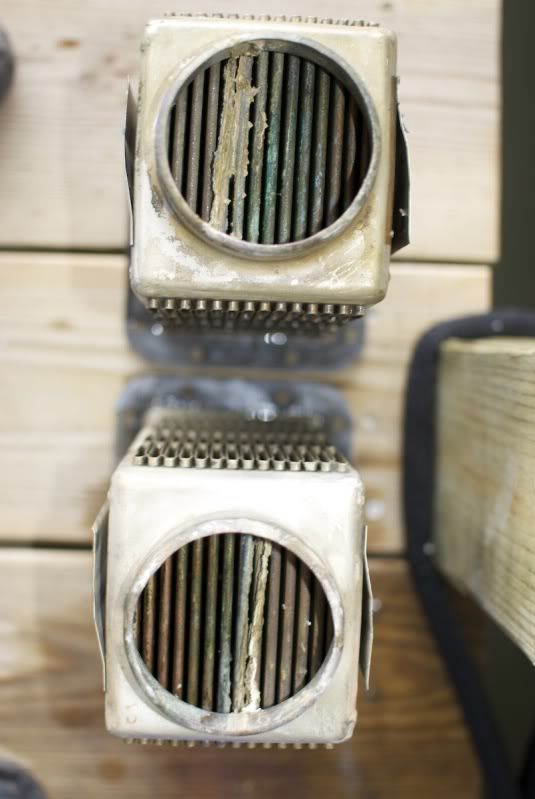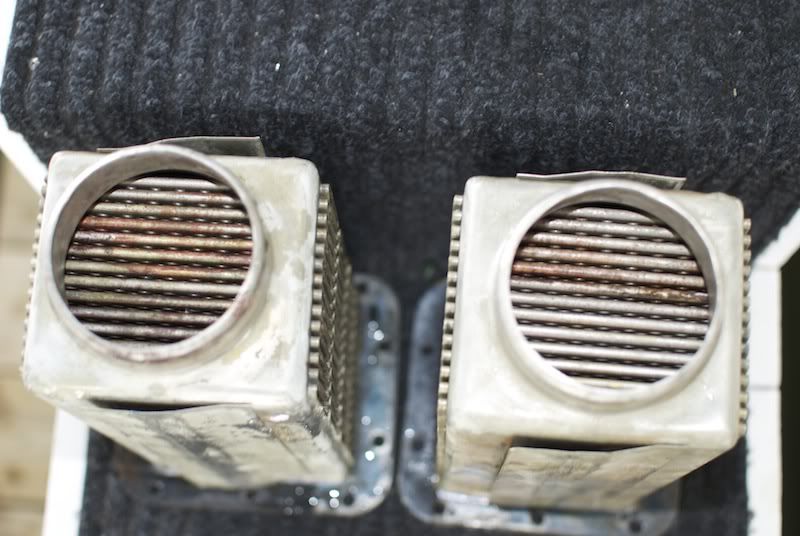yachtsmanbill
Legendary Member
- Joined
- Apr 3, 2006
- Messages
- 7,926
- Status
- CAPTAIN
- Hatteras Model
- 58' TRIPLE CABIN (1970 - 1976)
My faux pas... On this side it looks like the plate may just be stuck on a gasket. Permatex maybe? I would thred a few screws into it a few turns so that it doesnt drop off and smash yer toes; tap around it with a hammer; it may loosen up. I would put a little heat on it, maybe 150F to soften any sealant and then maybe ease a wedge under the plate, but use prudence.
I am under the impression that the core will be stuck in the fit... if you take the cover off of the other side, the reciprocal plate has threaded holes to run bolts into and push the core out towards this side. Otherwise youll have to pull it out from this side.
Better ask one of the expurts first tho... ;-)) ws
I am under the impression that the core will be stuck in the fit... if you take the cover off of the other side, the reciprocal plate has threaded holes to run bolts into and push the core out towards this side. Otherwise youll have to pull it out from this side.
Better ask one of the expurts first tho... ;-)) ws




